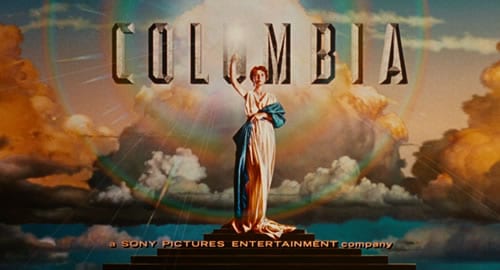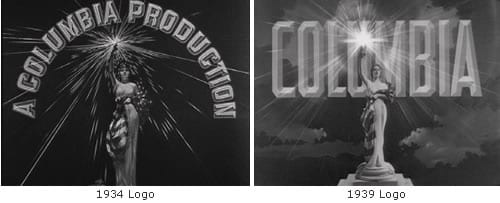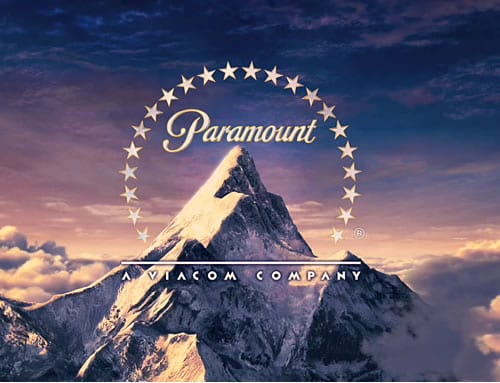
Have you ever wondered why logos that appear in movies are like this? Who is the boy on the moon in the DreamWorks logo? Who is the model featured in the Columbia intro? Which mountain inspired the Paramount logo?
Keep reading and you will find out!
DreamWorks SKG: Boy on the Moon
In 1994, director Steven Spielberg, Disney studio president Jeffrey Katzenberg, and producer David Geffen got together to found a new studio called DreamWorks.
Steven Spielberg was looking for a logo for Dreamworks that was kind of reminiscent of Hollywood's golden age. It occurred to him that it was the image of a man sitting on the moon and fishing. He decided to speak with a special effects supervisor named Dennis Muren from Industrial Light and Magic, someone who had also worked with him on several occasions. Dennis suggested that it be a hand-painted logo, which Spielberg thought was a great idea, and hired artist Robert Hunt to paint it. He proposed several alternatives, including the replacement of a man by a child sitting on a crescent moon and fishing, something that attracted Steven more. The child? That young man is about William, Robert Hunt's own son.
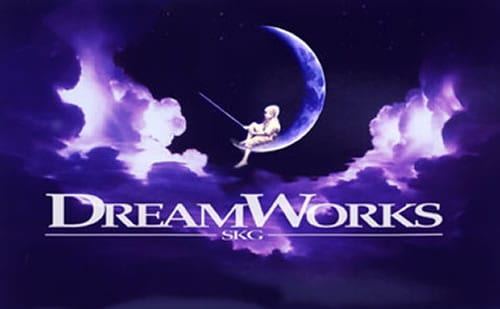
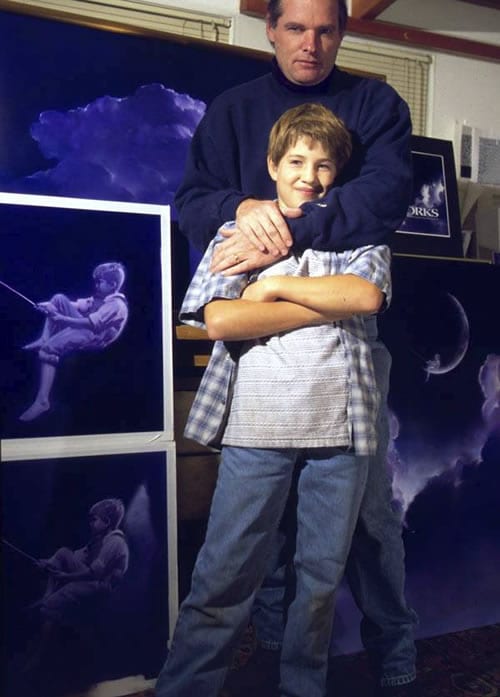
Metro-Goldwyn-Mayer (MGM): Leo the Lion
In 1924, publicist Howard Dietz designed the "Leo the Lion" logo for Samuel Goldwyn Picture Corporation. He is based on the athletic team at his alma mater Columbia University, the Lions. When Goldwyn Pictures merged with Metro Pictures Corporation and Louis B. Mayer Pictures, the newly formed MGM retained the logo.
Since then, there have been five lions playing the role of "Leo the lion." The first was Ribbons, which appeared in the openings of MGM silent films from 1924 to 1928. The next lion, Jackie, was the first MGM lion whose roar was heard by the public. Although the movies were silent, Jackie's famous growl-roar sequence was played on the phonograph as the logo appeared on screen. It was also the first lion to appear in Technicolor in 1932.
The third lion and probably the most famous was Tanner (although Jackie is still used at the same time for MGM black and white films today). After the use of an anonymous (with a large mane) and fourth lion, MGM opted for Leo, which the studio has used since 1957.
The company motto "Ars Gratia Artis" means "art for art's sake."
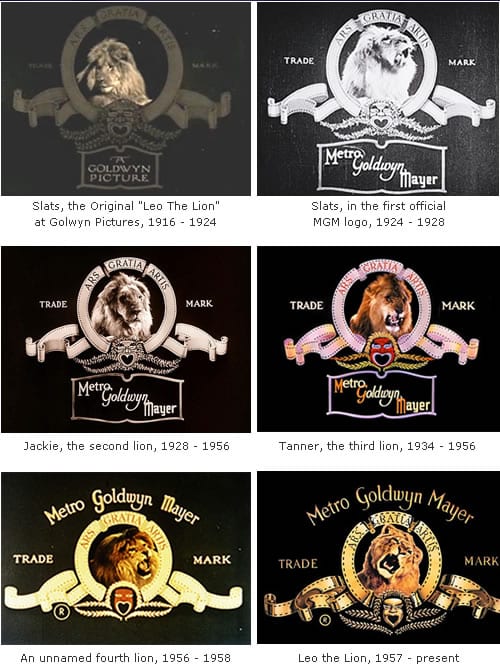
20th Century Fox: The Searchlight Logo
In 1935, Twentieth Century Pictures and Fox Film Company (then primarily a chain theater company) merged to create Twentieth Century-Fox Film Corporation (which later removed the last two words).
The original Twentieth Century Pictures logo was created in 1933 by famous landscaper Emil Kosa Jr. After the merger, Kosa simply replaced "Pictures, Inc." with "Fox" for the current logo. In addition to this logo, Kosa was also famous for his matte painting of the Statue of Liberty in ruins in the Planet of the Apes (1968).
Perhaps as famous as the logo is the song "20th Century Fanfare," composed by Alfred Newman, then United Artists' musical director.
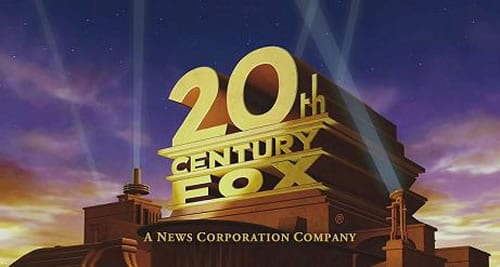
Paramount: the majestic mountain
Paramount Pictures Corporation was founded in 1912 as the Famous Players Film Company by Adolph Zukor, and the Frohman brothers' theater moguls, Daniel and Charles.
The Paramount 'Majestic Mountain' logo was first drawn up as a doodle by WW Hodkinson during a meeting with Zukor, based on the Ben Lomond mountain he met during his childhood in Utah (the animated logo would be made later probably by Artesonraju from Peru ). It is the oldest Hollywood logo that has survived to this day.
The original logo has 24 stars that symbolized Paramount's 24 hired movie stars then (it is now 22 stars, although no one could tell me why the number of stars was reduced). The original matte paint has also been replaced with a computer generated mountain and stars.

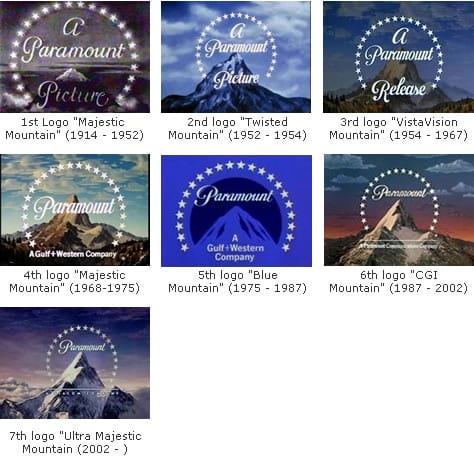
Warner Bros.: The Shield WB
Warner Bros. (yes, that's legally "Bros." not "Brothers") was founded by four Jewish brothers who emigrated from Poland: Harry, Albert, Sam, and Jack Warner. Actually, those are not the names they were born with. Harry was born "Hirsz," Albert was "Aaron," Sam was "Szmul," and Jack was "Itzhak." His original surname is also unknown - some people said it is "Wonsal", "Wonskolaser" or even Eichelbaum, before it was changed to "Warner".
At first, Warner Bros. had trouble attracting top talent. In 1925, at Sam's insistence, Warner Bros. made the first feature film "Talking Pictures" (When he heard about Sam's idea, Harry famously said "Who the hell wants to hear the actors talk?"). That earned the company points and made Warner Bros. famous.
The Warner Bros. logo has actually undergone many revisions as you can see.
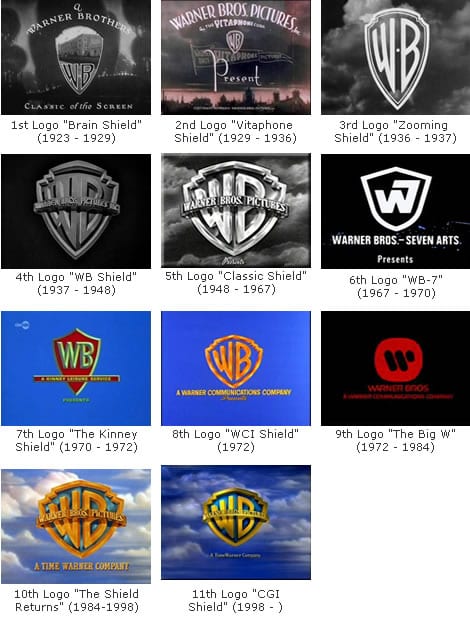
Columbia Pictures: The Lady with the Torch
Columbia Pictures was founded in 1919 by brothers Harry and Jack Cohn, and Joe Brandt as Cohn-Brandt-Cohn Film Sales. Many of the studio's early productions were low-budget projects until the Cohn brothers bought Brandt in 1924 and decided to change the name of their studio to Columbia Pictures Corporation in an effort to improve its image.
The studio logo is Columbia, the female personification of America. It was designed in 1924 and the identity of the "Torch Lady" model was never conclusively established (although more than a dozen women had claimed to be.)
In her autobiography around 1962, Bette Davis claimed that Claudia Dell was the model, while in 1987 People magazine claimed that the actress was Amelia Batchler the model. In 2001, the Chicago Sun-Times claimed it was about a woman who worked as an extra at Columbia named Jane Bartholomew. Considering how the logo has changed over the years, surely these three statements are true.
The current logo was designed in 1993 by Michael J. Deas, who was hired by Sony Pictures Entertainment to return the lady to her "classic" look.
